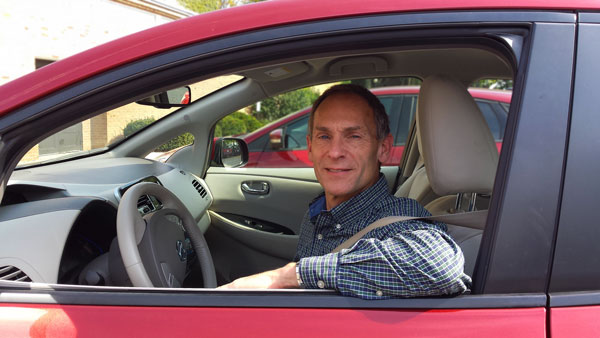Once upon a time, doctors encouraged people to smoke as a tonic for their health. In “The King’s Speech,” set before World War II, a doctor is tending to King George VI, who suffers from a debilitating stutter even as he is called upon to rally the nation in one public pronouncement after another. The doctor urges his patient to light up: “Cigarette smoking calms the nerves and gives you confidence.”
The line leaves us with a smug sense of bemusement. What was the doctor thinking? In 2016, warning labels come to mind as if on flash cards: cigarettes cause cancer; cigarettes are addictive; smoking can kill you. Once a symbol of cool success, cigarette smoke now looks dangerous as it drifts in dark curls. We direct cigarette smokers outside to a bench or a sidewalk, keeping those curls at a safe distance.Someday we’ll see exhaust from gasoline-powered vehicles in the same way. We’ll wonder how it was that we knowingly poured gas into our cars and then burned that gas to go 20 or 30 or 40 miles per gallon, warming the planet one ride at a time. We’ll have a visceral reaction. Burning gas will seem gross, dirty, unthinkable.
The sooner we reach that mindset, the better. We’re coming off another record-setting summer. August tied July as being the hottest month since record-keeping began in 1880, according to NASA. Odds are that 2016 will be the third year in a row of record heat, with 2016 laying claim to the title hottest year in recorded history.
In an interview with The New York Times last month, President Obama said of the graphs of a warming planet that he sees in briefing reports: “they’re terrifying.”
But those numbers, and the scale of the challenge, can immobilize us just as easily as stir us to action.
Earlier this year, in a conversation shared in The Atlantic, the president called climate change the gravest of problems: “it is a political problem perfectly designed to repel government intervention. It involves every single country, and it is a comparatively slow-moving emergency, so there is always something seemingly more urgent on the agenda.”
Some steps, only a government can take. The Obama administration’s Clean Power Plan would dramatically reduce carbon emissions from the nation’s power plants by 2030. But first the plan must overcome court challenges.
Other steps, a business can take. Goshen College quietly operates two charging stations for electric vehicles at the north end of the Physical Plant. The battery charge is free for now, a way to encourage the use of electric cars.
Still other steps, only individuals can take. Earlier this year I bought a three-year-old Nissan Leaf with 23,433 miles for $11,000. It’s all electric, promises a range of 80 miles and releases no carbon.
In effect, the car is powered by the wind, since the college purchases renewable energy credits from NIPSCO to ensure that the electricity we use is produced by a wind generator somewhere in the Midwest (most NIPSCO electricity still comes from coal).
At this stage, we can’t let the perfect be the enemy of the good. It’s enough to ask: What is one thing, even one small thing, that I can do to reduce my carbon footprint? And doing that one thing might have unexpected benefits, including prompting others to take a similar step. I bought the Leaf in large part because family members recommended it (as a complement for our Honda Civic, available for longer drives).
And we bought that Leaf with gas savings in mind. Only after driving the car did we appreciate how nice it is to glide from one place to another. As electric vehicles become more popular, streets will become quieter, as well as cleaner. An article in the same issue of The Atlantic says that voices like bicycle bells might become “the dominant sounds of a city.”
We already have fleets of bicycles with bells on campus. Now we need parking lots full of cars that glide.


